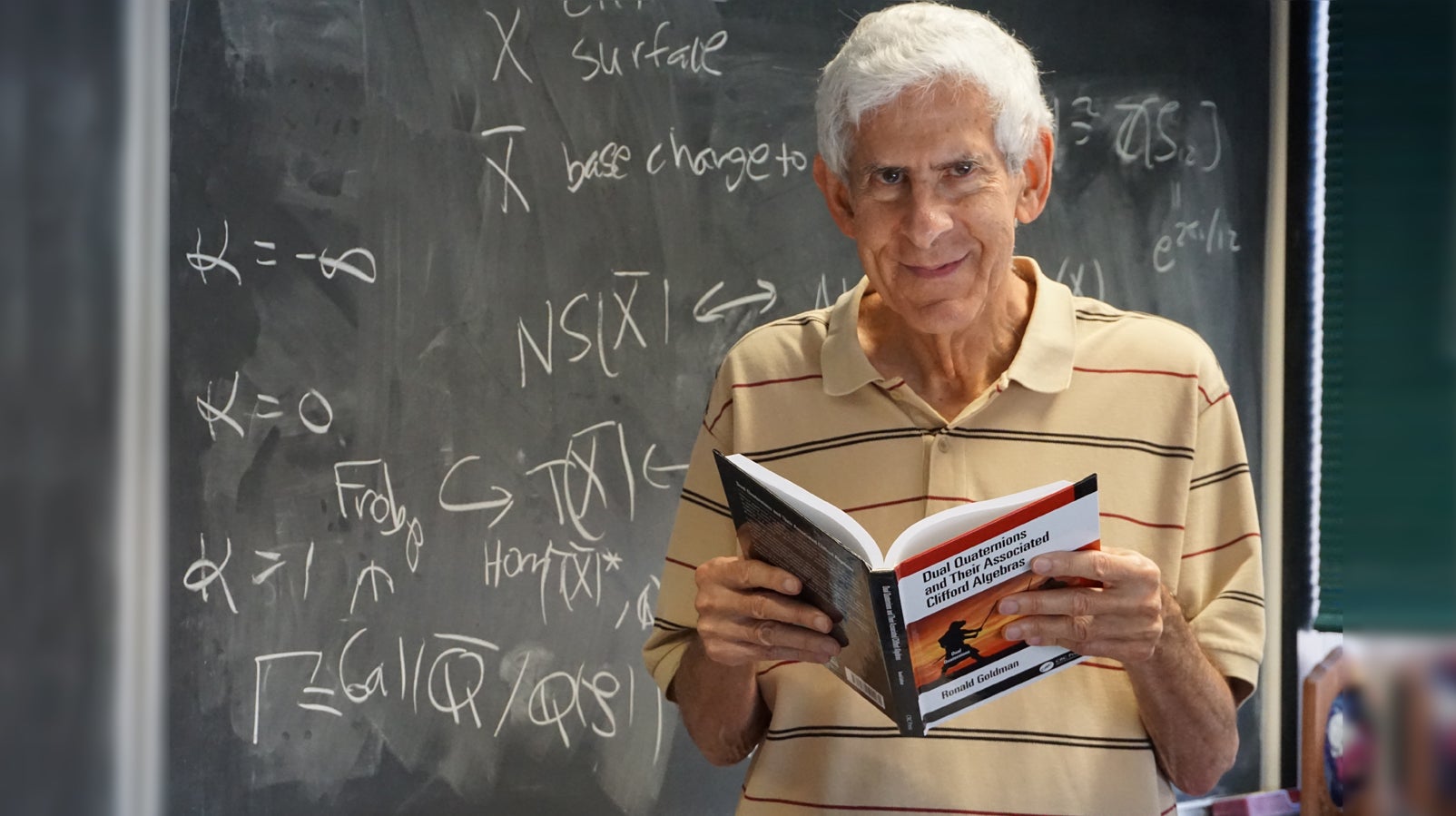On September 29, 2023, Rice University Computer Science Professor Ronald N. Goldman added another title to his more than 200 papers, books, and conference presentations. The first edition of his second book on topics related to quaternions and computer graphics, Dual Quaternions and Their Associated Clifford Algebras, is now available in print or as an e-book.
“Two things inspired me to write a sequel to Rethinking Quaternions,” he said. “I had never even heard about dual quaternions until I read the paper presented by Ladislav Kavan and his colleagues as part of the proceedings for the 2006 ACM Special Interest Group for Computer Graphics (SIGGRAPH). Kavan’s research first opened my eyes to the mathematical elegance, power, and possible applications of dual quaternions.
“Later, several authors including Gunn, Mullineux, and their collaborators were touting the virtues of Clifford algebras for dual quaternions as a general framework for computations in computer graphics. I liked what they were doing and agreed with much of their approach. Seeking additional references, I realized much of the results on dual quaternions and their associated Clifford algebras were scattered throughout the literature. My book is intended to provide a clear, comprehensive, straightforward exposition of these topics in a single easily accessible location.”
Throughout his career, Goldman has turned to advanced mathematics for the representation, manipulation, and analysis of geometric models in computer graphics. His research has practical commercial applications, such as his implementation of one of the first industrial solid modeling systems when he worked as a mathematician for MDSI — a company specializing in motion control and factory automation based on CNC (computer numerically controlled) machine software. He has also contributed to computer-aided design at Ford Motor Company and the mainframe and supercomputer manufacturer Control Data Corporation.
After a decade in industry, Goldman shifted his career to academia. He was a professor in the computer science department at the University of Waterloo in Ontario, Canada before joining Rice University as a computer science professor in 1990. His research led Goldman to conferences around the world, including the 2011 International Workshop on Mathematics and Algorithms for Computer-Aided Manufacturing, Engineering, and Numerical Control —MAMENC 2011— in Beijing. At MAMENC, he discovered a new research direction.
He said, “Quaternions first captured my attention at a conference on geometric modeling which I attended over a decade ago in China. I arrived late at a session where Rida Farouki was using quaternions in his talk. Since I arrived late, I missed his initial exposition, and wondered if I might derive his initial results on quaternions for myself.
“This got me to thinking more deeply about how I could visualize these 4-dimensional objects (quaternions) and how to apply these 4-dimensional vectors (quaternions) to transform points and vectors in 3-dimensions. That led to my first book on the topic, Rethinking Quaternions. For an alternative intuitive approach to quaternions, I suggest Grant Sanderson’s YouTube expositions: Visualizing quaternions (4d numbers) with stereographic projections.”
Goldman’s new book explores how Clifford algebra for dual quaternions has emerged recently as an alternative to standard matrix algebra as a computational framework for computer graphics. He presents dual quaternions and their associated Clifford algebras in a new light, accessible to and geared toward the computer graphics community.
“Although I may have been inspired to write it as a sequel, readers do not need to tackle the first book before diving in. This book was written to be accessible to anyone with a basic knowledge of quaternion algebra. This book should be of particular interest to forward-thinking members of the computer graphics community.”
He said that making this book and topic accessible was one of his primary goals. “As I was writing, I tried to remember why this topic initially seemed difficult to me and I tried to anticipate what might cause trouble to other non-adepts. There is no secret to good writing. In the end, it is just a lot of time and effort tracking down references, then writing, rewriting, and rewriting again.”
Goldman completed his B.S. in Mathematics from the Massachusetts Institute of Technology in 1968 and his M.A. and Ph.D. in Mathematics from Johns Hopkins University in 1973.

